SO2 Emissions
Anthropogenic sources
Fossil fuel combustion at power plants are the largest sources for SO2 emissions. Industrial facilities and the burning of high sulfur containing fuels (heavy fuels) by ships are other sources of SO2 emissions. 66% of the atmospheric SO2 emits from anthropogenic sources.
Natural sources
Natural source of SO2 are the oxidation of Dimethyl sulfide (DMS), with the ocean as the main source, volcano eruptions and biomass burning.
Annual total emissions SO2
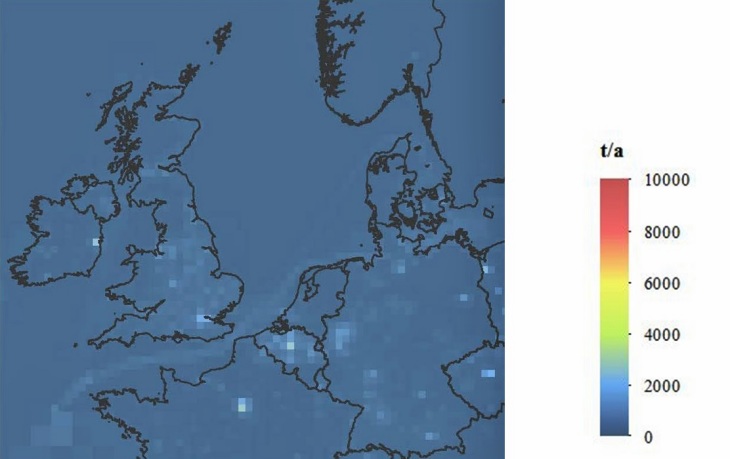
The emitted mass of SO2 is much lower than that of NOx. In the hotspots they reach 2000 t/a.
Annual SO2 emissions by ships
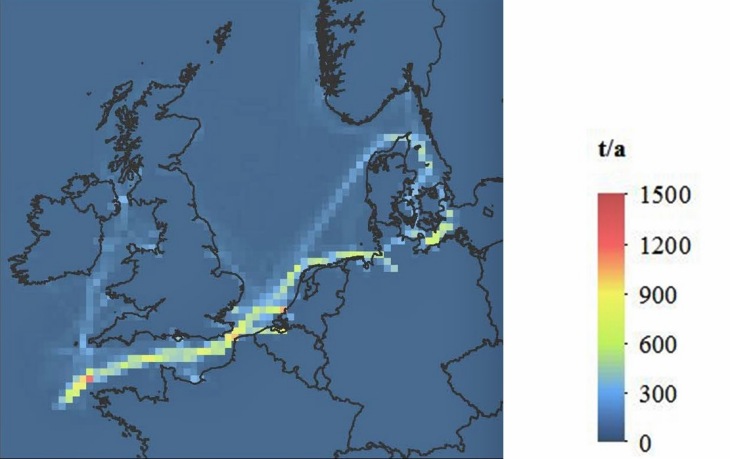
Ship emissions over the English Channel and over the main shipping routes are between 500 and 900 tons per year and grid cell.
Scenario No ECA: SO2 Emission Change
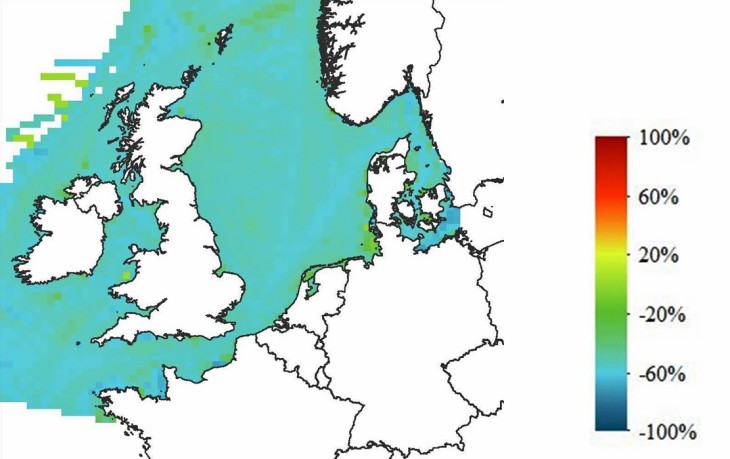
In the scenarios for 2030 all ships follow the same rules for sulphur, which allow only 0.1% S in the fuel in the ECA and 0.5% outside the borders of the ECA (scenarios). Therefore, the scenarios do not differ much in terms of sulphur emissions.
Scenario ECA SCR 21: SO2 Emission Change
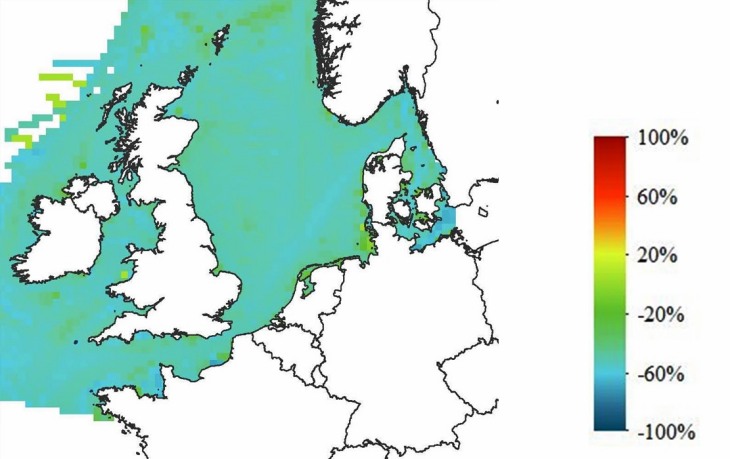
In the scenarios for 2030 all ships follow the same rules for sulphur, which allow only 0.1% S in the fuel in the ECA and 0.5% outside the borders of the ECA (scenarios). Therefore, the scenarios do not differ much in terms of sulphur emissions.
Scenario ECA SCR 16/LNG 16: SO2 Emission Change
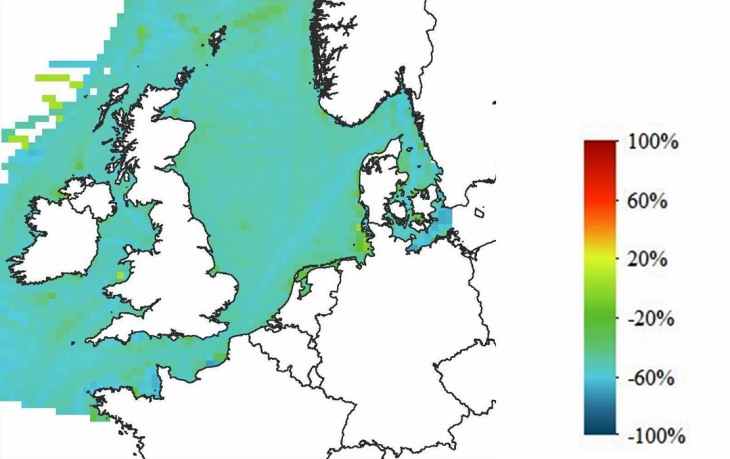
In the scenarios for 2030 all ships follow the same rules for sulphur, which allow only 0.1% S in the fuel in the ECA and 0.5% outside the borders of the ECA (scenarios). Therefore, the scenarios do not differ much in terms of sulphur emissions.
LNG does not contain any sulphur, which is why a difference can be seen between the ECA LNG and the ECA SCR (0.1% sulphure). The ECA LNG 16 scenario shows that SO2 is even further reduced (60- 80%) compared to the reduction of the emission in the ECA SCR 16 scenario (40-60%).
Scenario ECA opt: SO2 Emission Change

In the scenarios for 2030 all ships follow the same rules for sulphur, which allow only 0.1% S in the fuel in the ECA and 0.5% outside the borders of the ECA (scenarios). Therefore, the scenarios do not differ much in terms of sulphur emissions.
